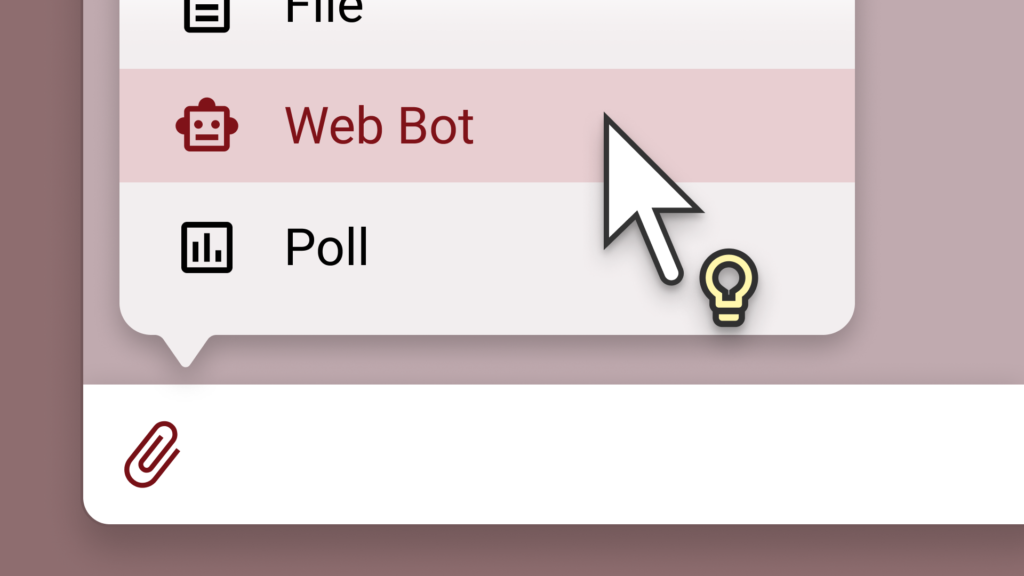Telegram Info readers were left wondering why we need Web bots and what opportunities do they provide. Time to explain!

Inline bots evolve
Many users don’t understand the difference between the new Web bots and the gaming platform, as both Telegram features simply allow users to open a browser in the app using bots. The difference is that users will now be able to add bot buttons to the «Attach» menu. By clicking the bot button, bots can create their own interfaces to interact with the user. This new concept is the development of the idea of inline bots — in a way, it’s like iMessage extensions.
Inline bots, such as @gif, @vid, @wiki, allow you to quickly send messages with rich content without leaving current Telegram chat. The problem is that the only way to interact with an inline bot is the message text field, which is often insufficient, and in most cases is only good for searching content from a database. For years, developers have developed workarounds for this limitation, for example, by suggesting configuring the command beforehand in private messages, or after sending, using an inline keyboard.
Web bots, on the other hand, can create any kind of interface directly in the attach menu. The use of web technologies (i.e., an embedded browser) gives developers maximum flexibility when creating interfaces. Telegram Info has found that within web interfaces, developers can request files from disk, use a webcam and microphone — after appropriate permission from the user.
Examples
A few ideas for bots that will become possible:
- A bot for drawing to quickly share your doodles.
- A bot to apply filters to webcam selfies.
- A bot to record a voice message and change the way your voice sounds.
- A bot for attaching files from Google Drive
Monetization
Bot creators will most likely be able to monetize their bots with built-in advertising, instead of annoying regular advertising in private messages.
IP addresses
Many users are worried that bots will have an extra opportunity to acquire a user’s IP address. However, for a regular user, IP addresses are not so sensitive today, and in the vast majority of cases are not capable of uncovering a user’s identity on their own. After all, every site you visit on the Internet gets your IP address. As for privacy concerned users, it would be reasonable for Telegram to warn about IP address exposure when a Web bot being launched for a first time (and it seems it’s going to be so). On the other hand, such warning might scare low-skill users when it’s unnecessary. The gaming platform has such a warning too, though, it’s disabled for verified bots, such as @gamee, and it doesn’t specify anything specifically about IP addresses.
Criticism
As a closing note, we are also ready to offer some criticism for the update:
Telegram is preparing a platform for Web bots but has yet to provide any tools to work with it. The developer has to set up the data exchange between the Web-application and the bot by their own.
In addition, Telegram could create tools to help developers more quickly create web interfaces that fit into Telegram’s overall design language (what we mean, is that Telegram could develop a UI framework). This way, developers could spend less resources on design and interface, and instead focus on features. At the same time, users would get consistent design in most bots.